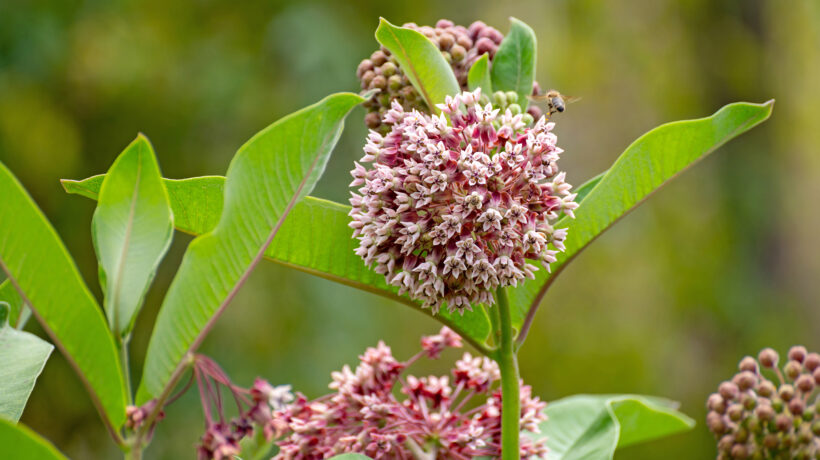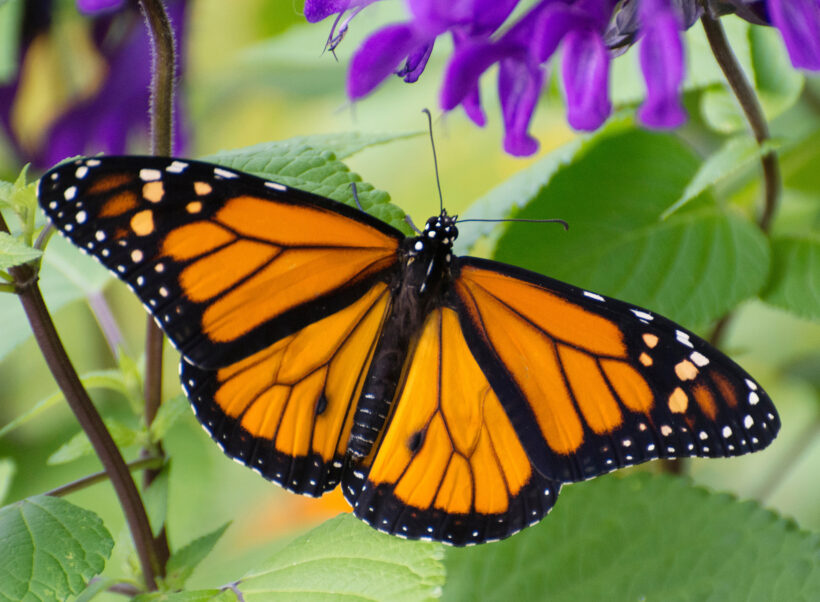You can attract and help butterflies and other pollinators with the right choice of plants and yard care.
For many gardeners, part of the reason we like plants and flowers is because we like the critters they attract. One of the basic tenets of having a backyard wildlife habitat is to offer food, water, shelter and a safe place to raise young, and our gardening choices can have real impact on butterfly populations.

To attract them, author and butterfly expert Jaret C. Daniels reminds us, “Private yard and home gardens alone collectively comprise the largest percentage of green space in urban areas.” His new book, Your Florida Guide to Butterfly Gardening, is brimming with color photos of butterflies and the plants they need, plus advice on planting in north Florida.
Daniels really knows his bugs. Well, insects, as he’s a professor in the Department of Entomology and Nematology at the University of Florida. He also serves as curator at the Florida Museum of Natural History’s McGuire Center for Lepidoptera (that’s butterflies, folks) and Biodiversity. His book has lots of solid advice about how to attract and keep butterflies in your garden.
One, offer both nectar sources for the adults and host plants for larva. If you only have nectar plants for the adults, that’s “much like a quick mart,” Daniels writes. To encourage them to stay in your yard and reproduce, larval host plants are crucial so the young can grow safely.
Other elements to consider are diversity in both heights and the mix of plant species. You don’t want a monoculture with just one type of tree or shrubs. Nature always has a mix of plants, so you should, too. Think also about microclimates you might create. The fence on the north side of your yard might shelter a dense flowering shrub. That southwest corner of the house that really heats up in summer can be a perfect spot for a butterfly mud bath and more tender flowering plants in the winter.
Daniels also recommends that you plant in groupings and have more than just one of any flower or shrub.
“Larger drifts of color and plant groups tend to be more apparent in the landscape and attractive to visually searching butterflies,” he notes.
He also advises using native plants and keeping in mind the hardiness zone we’re in. Generally, Marion County is in Zone 9A, which means temperatures can occasionally go as low as 20-25 degrees. Those freezes and frosts will damage tender plants.
Beyond flowers and habitat, Daniels says to offer other resources for butterflies, such as filling a shallow dish with “old fruit, banana peels or melon rinds.” He also warns that this method can attract unwanted visitors like wasps, flies and ants. Personally, I’d only try this technique in wintertime and supervise it carefully, taking it in at night.
Butterflies also need water. Many get what they need from nectar, but you can also offer a shallow mud bath in a protected area with the soil kept moist.
 If you want some real inspiration for your butterfly garden, make the short trek to the Butterfly Rainforest exhibit at the Florida Museum of Natural History in Gainesville. This habitat features hundreds of free-flying butterflies and birds from around the world, in a lush tropical setting that’s enchanting and educational at the same time. A walking path takes you through the screened enclosure, and live butterflies and birds flit among the foliage. The museum also has an indoor exhibit, the Wall of Wings portion, which houses a three-story tall showcase of butterfly and moth specimens from all over the world. It includes some of the largest specimens on the planet, including the giant goliath birdwing, with females that can have a wingspan of 11 inches.
If you want some real inspiration for your butterfly garden, make the short trek to the Butterfly Rainforest exhibit at the Florida Museum of Natural History in Gainesville. This habitat features hundreds of free-flying butterflies and birds from around the world, in a lush tropical setting that’s enchanting and educational at the same time. A walking path takes you through the screened enclosure, and live butterflies and birds flit among the foliage. The museum also has an indoor exhibit, the Wall of Wings portion, which houses a three-story tall showcase of butterfly and moth specimens from all over the world. It includes some of the largest specimens on the planet, including the giant goliath birdwing, with females that can have a wingspan of 11 inches.
My first little yard project at my current house was redoing a small circle bed around a lamppost. I bought lantana, daisies and marigolds, and I didn’t even get them in the ground when two butterflies showed up to supervise and partake of the flowers. It was a sweet moment and proved that what you do in your yard matters to them.
Jaret C. Daniels book, Your Florida Guide to Butterfly Gardening, is available from University Press of Florida and major booksellers. To learn more about the Butterfly Rainforest, go to floridamuseum.ufl.edu OS
A native Floridian and lifelong gardener, Belea spends her time off fostering cats and collecting caladiums. You can send gardening questions or column suggestions to her at belea@magnoliamediaco.com






